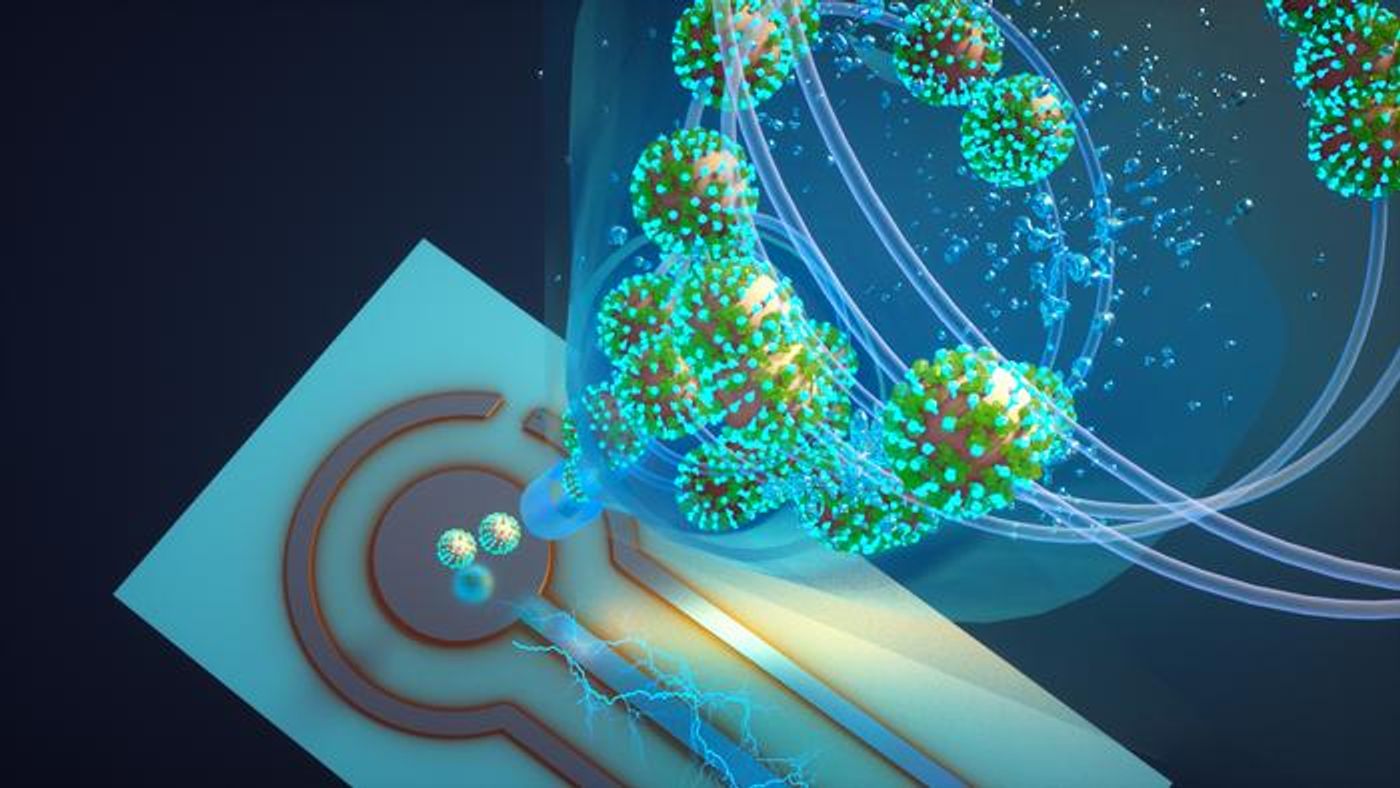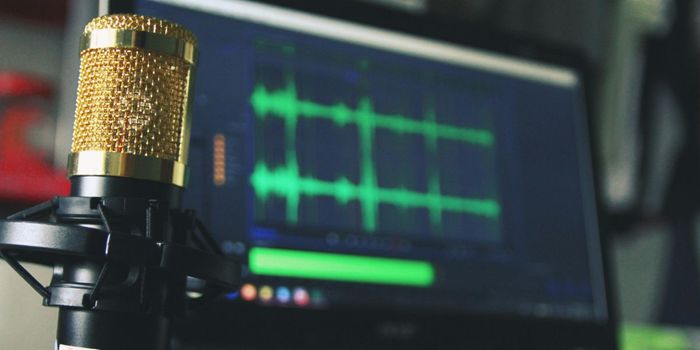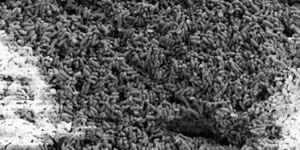Proof-of-Concept Device Allows Real Time Detection of Covid-19 Virus Variants
A recent study published in Nature Communications examines a new proof-of-concept device capable of detecting Covid-19 variants, along with other well-known airborns viruses, also known as virus aerosols, in the air within five minutes. This study was conducted by an international team of researchers and holds the potential for mitigating the spread of Covid-19 and other illnesses in a myriad of public places, including health care facilities, schools, and hospitals.
Artist concept of the proof-of-concept air quality monitor designed to detect SARS-CoV-2 virus within minutes that was developed for the study. (Credit: Joseph Puthussery)
“There is nothing at the moment that tells us how safe a room is,” said Dr. John Cirrito, who is a professor of neurology in the School of Medicine at Washington University in St. Louis (WUSTL), and a co-author on the study. “If you are in a room with 100 people, you don’t want to find out five days later whether you could be sick or not. The idea with this device is that you can know essentially in real time, or every 5 minutes, if there is a live virus.”
This research builds off a previous study involving a biosensor designed to detect an Alzheimer’s disease biomarker, which was then modified to detect the SARS-CoV-2 spike protein for this study. The researchers used what’s known as wet cyclone technology to merge the biosensor with an air sampler, which used electrochemistry with the task of detecting virus aerosols, one of which being Covid-19.
“The challenge with airborne aerosol detectors is that the level of virus in the indoor air is so diluted that it even pushes toward the limit of detection of polymerase chain reaction (PCR) and is like finding a needle in a haystack,” said Dr. Rajan Chakrabarty, who is a Harold D. Jolley Development Associate Professor in the WUSTL McKelvey School of Engineering, and a co-author on the study. “The high virus recovery by the wet cyclone can be attributed to its extremely high flow rate, which allows it to sample a larger volume of air over a 5-minute sample collection compared with commercially available samplers.”
To test their new air sampling biosensor, the researchers took air samples from the apartments of two Covid-positive patients and from a virus-free control room. The results showed the device successfully detected Covid-19 RNA while not detecting anything in the control room. The team then conducted laboratory experiments and found the device could detect virus aerosols from samples taken after mere minutes.
“We are starting with SARS-CoV-2, but there are plans to also measure influenza, RSV, rhinovirus and other top pathogens that routinely infect people,” said Dr. Cirrito. “In a hospital setting, the monitor could be used to measure for staph or strep, which cause all kinds of complications for patients. This could really have a major impact on people’s health.”
The team is conducting the necessary steps to develop the device for commercial use.
What new discoveries will scientists make about air monitoring devices and virus aerosols in the coming years and decades? Only time will tell, and this is why we science!
Sources: Nature Communications, World Health Organization, Washington University in St. Louis, News-Medical Life Sciences, University of Rochester
As always, keep doing science & keep looking up!









